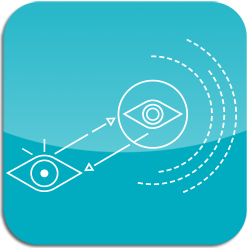
Case Studies
QMuseum: A Mobile Museum Tour
by WorkLearnMobile

One of the (many) cool things about running a mobile-learning team embedded inside a big tech business is the access to emerging tech, and the QMuseum was all about that.
Today, bluetooth beacons are fairly mainstream, but back in early 2013 there were only a couple of very expensive ones, and development was focussed primarily on retail, not learning. Luckily Qualcomm had their own, internal beacon team (originally called Fyx) who invited us to one of their hack-days, little realising how enthusiastically we’d dive in.
We got enthusiastic about using beacons for indoor positioning, and for surfacing learning content based on where the user was. Luckily we had access to Qualcomm’s Corporate Museum (filled with almost 30 years of engineering gadgetry), as well as some great docents, who would act as tourguides for visitors. So collecting media was easy (photos in the museum; videoing Mark, one of the docents in action; digging through the archives for additional information about key exhibits). The tricky part was turning this into a natural-feeling app.
Here’s where the beacons come in. We used Bluetooth LE beacons from Gimbal, which we positioned all around the museum. At the time we were unaware of anyone else making similar apps, so ended up spending 3-6 months on trying different combinations of indoor positioning. We tried:
- beacon triangulation: using relative signal strength across multiple beacons to locate
- directional signal: constraining beacon signal, so it was in more of a directional cone, rather than the broader zone
- multiple beacons per zone / simpler zoning: Larger zones of positioning, rather than the more accurate position
And in the end opted for a combination of 1 and 3.
 In parallel with the beacon testing, we developed the QMuseum app. We picked a timeline metaphor for the UX, partially to model the flow of the museum itself.
In parallel with the beacon testing, we developed the QMuseum app. We picked a timeline metaphor for the UX, partially to model the flow of the museum itself.
After considerable user testing, we ended up with 3 distinct modes of operation:
- In museum. Visual. As you walk around the museum, the app highlights the nearby items – but it is left up to the visitor themselves which items to click on, and which videos to watch. iPads / tablets work best here.
- In museum. Audio. By switching to audio only mode, you can hear audio tracks talking about the exhibits nearby
- Off site. The same app works perfectly without beacons. The only thing missing is the highlights showing which items are closest
Here is an intro video we made, which includes clips of the app in action:
What do you think? Two years have passed since we first launched QMuseum. It has now accompanied countless museum visitors, as well as generating fantastic interest in beacons for internal positioning. Our team were invited to several national museums to see coach them on the lessons we learned (incl Basketball Hall of Fame!). Several went with our Gimbal colleagues, and even got access to key sections of our code. The coolest was MOMA in New York who used BLE positioning as part of a mega Bjork exhibition. In addition, several dedicated businesses have set up around using BLE for indoor museum signposting!
What would you do with BLE?